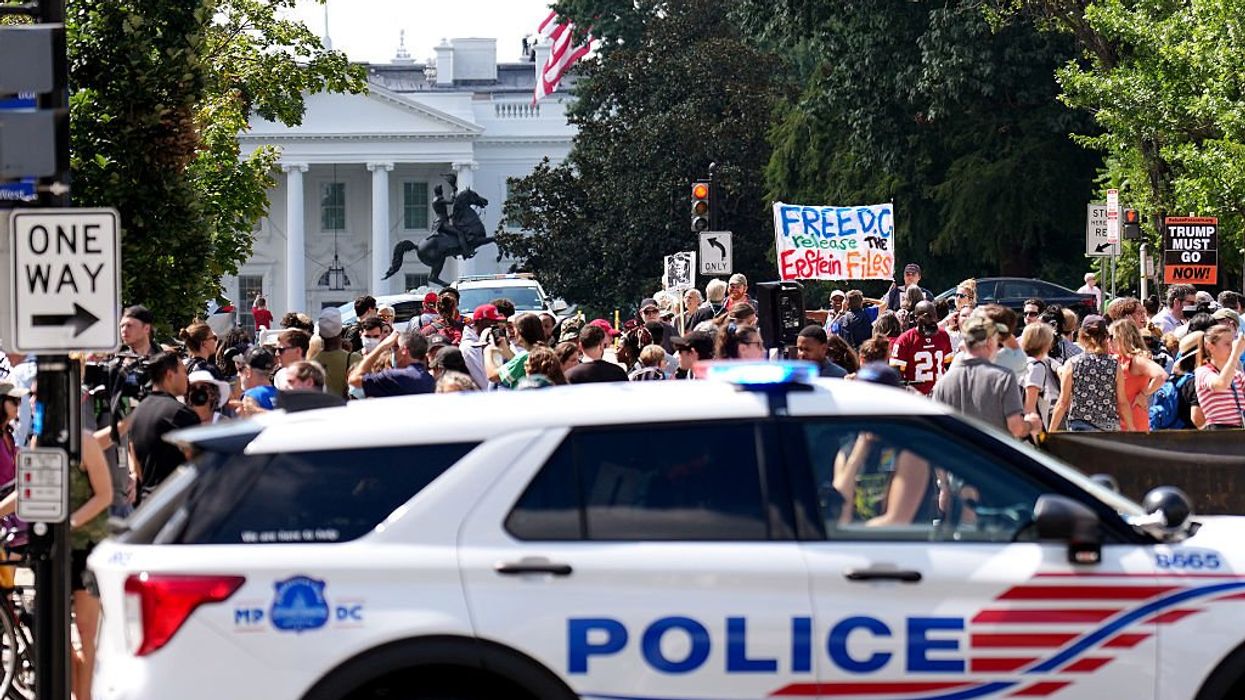President Trump announced the activation of hundreds of National Guard troops in Washington, D.C., along with the deployment of federal agents—including more than 100 from the FBI. This comes despite Justice Department data showing that violent crime in D.C. fell 35% from 2023 to 2024, reaching its lowest point in over three decades. These aren’t abstract numbers—they paint a picture of a city safer than it has been in a generation, with fewer homicides, assaults, and robberies than at any point since the early 1990s.
The contradiction could not be more glaring: the same president who, on January 6, 2021, stalled for hours as a violent uprising engulfed the Capitol is now rushing to “liberate” a city that—based on federal data—hasn’t been this safe in more than thirty years. Then, when democracy itself was under siege, urgency gave way to dithering; today, with no comparable emergency—only vague claims of lawlessness—he mobilizes troops for a mission that looks less like public safety and more like political theater. The disparity between those two moments is more than irony; it is a blueprint for how power can be selectively applied, depending on whose power is threatened.
Making Cities Vulnerable to Federal Overreach
Under the Home Rule Act, Congress retains ultimate control over the District’s laws and budget. D.C. elects its own mayor and city council, but federal lawmakers can overturn local legislation and must approve its budget. Most critically, the president can deploy the D.C. National Guard without the mayor’s consent—a power the executive does not have over state Guards. That unique arrangement makes the city an irresistible stage for any president looking to flex federal muscle without having to negotiate with a governor or legislature.
Trump sees that combination of high visibility and federal control as an opportunity too good to pass up. His second term has been marked by aggressive centralization of authority—through executive orders, personnel purges, and budgetary power grabs—and D.C.’s status offers a perfect test case. The capital becomes not just a city to govern, but a living set piece in a broader performance about Trumpian dominance and nebulous “law and order” appeals. If the tactic works here, it sets a precedent for similar federal incursions into other politically hostile cities, normalizing the idea that a president can override local governance whenever it’s politically convenient.
Deploying troops into civilian spaces is supposed to be rare and temporary, reserved for genuine emergencies like natural disasters or riots on a scale that local authorities cannot control. Yet in a time of decreasing crime, the deployment serves less as a response to danger and more as a theatrical assertion of authority. This is a classic strongman move: troops not to solve real problems, but to project strength, intimidate opponents, and create the illusion of a crisis only the leader can fix. Once the public accepts soldiers in the streets without an actual emergency, the door opens to more frequent and less justified deployments.
The hypocrisy is staggering. This is a president—and a party—that claims to champion limited government and local control, now trampling both to impose federal will on a city that has neither requested nor needed intervention. When 'small government' comes to mean deploying troops on domestic streets, it ceases to be a guiding principle and reveals itself as a convenient fiction—invoked when power needs to be asserted, not restrained. And history tells us such theatrics rarely end where they begin: actions meant to project strength often spiral into overreach, engendering resentment and long-term damage to public trust.
Yes, America has called in the Guard before—1968 after Martin Luther King Jr.’s assassination, the 1992 Los Angeles riots, and Hurricane Katrina—but those were genuine emergencies. History also shows the risks: the fatal shootings at Kent State in 1970, the chaos of the 1971 Attica prison uprising, and the aggressive federal deployments in Portland in 2020 all eroded public trust and inflamed tensions rather than calming them. Using troops to serve a political storyline rather than public safety isn’t just unnecessary—it’s dangerous. Once leaders see the PR value of soldiers in the streets, the tactic becomes a habit, and habits in this arena are hard to reverse.
The Bigger Picture
What’s happening in Washington is a template. If a president can declare a security crisis in the safest D.C. in decades, he can do the same in Chicago, San Francisco, or any city run by his political adversaries. The precedent is clear: local authority is conditional, and federal force is on the table whenever it suits the president’s agenda. In a polarized nation, that precedent all but guarantees such power will be used for partisan purposes.
This is how “law and order” becomes “command and control.” Troops on city streets aren’t just about security—they’re a statement about where power resides. Once the public grows used to that image, the exceptional becomes routine, and local governments find themselves bypassed not just in matters of policing, but in a wide range of policy decisions. The symbolic power of soldiers in public squares reshapes how citizens view authority itself—less as a shared civic structure, more as a top-down command chain.
Public safety matters. But militarizing cities when the facts don’t warrant it erodes democracy while doing little to make anyone safer. In our constitutional system, the president is not a mayor-in-chief. Treating cities as occupied territory turns them into political props, strips away civil liberties, and normalizes the use of force in political disputes. A public accustomed to this image may not notice the erosion of rights until they are already gone.
If Washington is the first stage for this kind of governance, it won’t be the last. And by the time we notice the guardrails are gone, the troops will already be on our streets—this time, perhaps, with even less reason to be there than before.
Robert Cropf is a professor of political science at Saint Louis University.





















